All about mixer nuts

Mixers - devices that allow you to regulate the flow and temperature of water, consist of a large number of parts, each of which performs a specific function. In such a system, there can be no unnecessary or insufficiently important elements, and such a part as a nut ensures the operability of the entire crane as a whole.
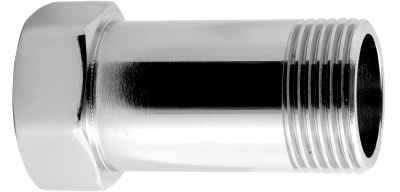
Description
A nut is a fastener that has a threaded hole, the connection is formed using products such as a bolt, screw or stud.
The mixer nut is an element that presses the system from the inside to the surface.

During installation or repair, the nut can be found on various nodes.
- Attached to the water inlet pipes in the bathroom or shower cabins. In this embodiment, the nut is usually on the outside and rigidly attached to the structure. Replacing it is almost impossible. Therefore, when working, maximum care is needed so as not to damage the element.
- Nut on the mixer body for the spout... Needed to fix the gander. There is a special expanding washer inside the structure, which allows the crane to turn to the right and left, while being securely fastened. Installation should also take place effortlessly so as not to scratch the coating.
- Clamping nut - systems of this type are most often seen in the kitchen. Typically used to attach to a sink or sink. The price for such mixers is low and it is better to purchase a brass construction so that the assembly is less susceptible to the corrosion process. You can simply fix the system with your hands without using a key.
- Fasteners for the cartridge on the lever-type valve. It is hidden under the decor and there is no way to get to it only if you remove the handle. The design has a large size and turnkey edges at the top, and at the bottom - a thread.
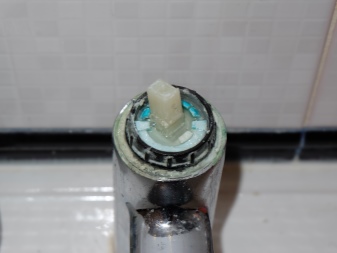
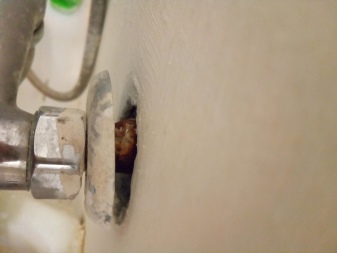
Species overview
The material used to make the nuts is copper, steel or brass. The nuts are finely threaded, so the likelihood of loosening is minimal.
The marking should contain information about the dimensions of the product.
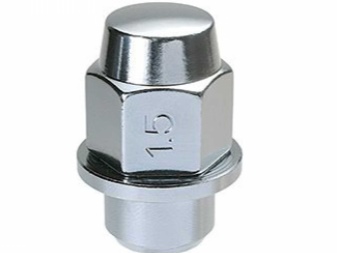
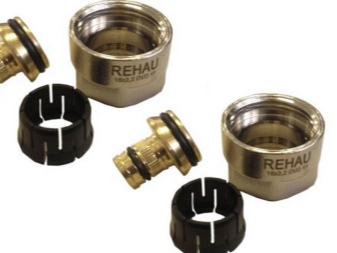
Standard parameters of nuts for mixers: diameter - 35, 40 mm, thickness - 18, 22, 26 mm, turnkey size - 17, 19, 24 mm.
- Union nut (or rear fastening) - fixes the system from the back to the surface. This accessory is installed between the faucet structure and wall mount adapters.
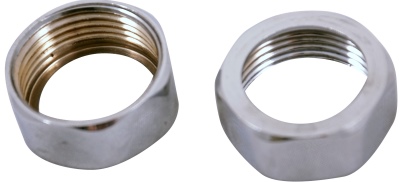
- Adapter nut - is needed in order to switch from a thread of one diameter to a thread of a different diameter. Has an external and internal threaded surface, as well as a hole for a hex key. The element is resistant to corrosion and alkalis, and has high strength.
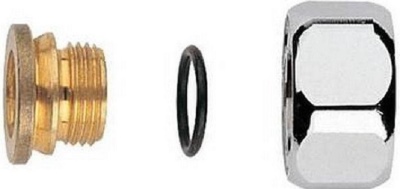
- Cartridge nut - part with six edges, designed to install the cartridge in the mixer structure. Resistant to deformation, produced from high strength metals, has a low price on the market.

- Internal hexagon - used to assemble a mixer or for a heated towel rail. Holds the union nuts on the mixer body. There must be a left-hand thread so that when tightening the union nut, the element does not "twist" out of the body.
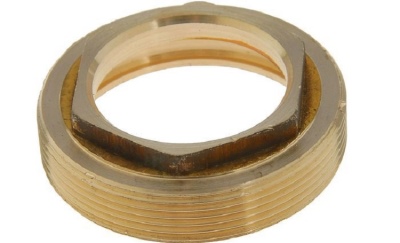
To keep costs down, some manufacturers are equipping mixers with poor quality parts. So, for example, in bath taps, you can often see clamping nuts without clear edges. They are not only problematic to screw on, but over time it is almost impossible to dismantle them.
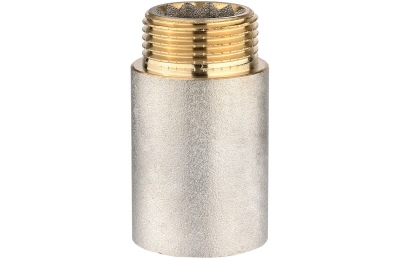
Selection Tips
There are situations when the nut for the mixer needs to be selected separately, without buying the entire structure. There are a few rules to keep in mind.
- Selection by size. The two systems are compared to ensure that the diameters are identical. It is enough to take with you the part for which you need the fasteners.
- Quality level. The nut must be free of burrs on the thread, and the thread itself must be uniform, there are no dents, damage or stains on the surface. Having studied such little things, we can conclude how well the part is made.
- Mixer cover. Mounting a chrome nut on a copper faucet is not a good idea. Aesthetically, this is unattractive. An exception if the part is hidden inside the structure.
- Product weight. The higher quality versions carry more weight. Fragile nuts are made from powder mixtures and alloys, they have a small mass.
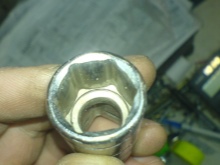


How to change?
Before you start installing the mixer, you need to dismantle the old one. Additional materials and tools are required, such as wrenches with sizes 10, 11, 22 and 24, and two adjustable wrenches for removing flare nuts. Most often, new underwater hoses are required when replacing. Usually the mixers are already equipped with them, but their length is 30 centimeters.
Before you start replacing the structure, you need to make sure that this size is sufficient.
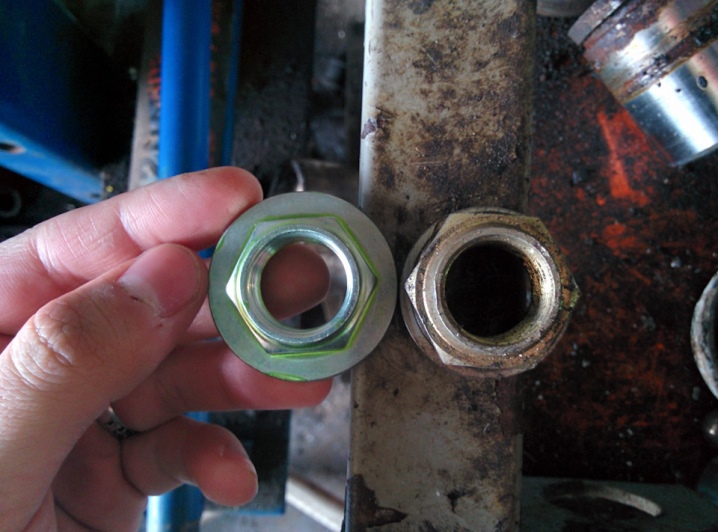
Also, when selecting a hose, remember the distance from the tap to the hot and cold water inlets. The pressure in the system changes sharply when the tap is turned on or off, while the hoses "twitch". Accordingly, so that a leak does not form at the junction, the elements should not be too tight, it is better if they sag. For a hose from the kit, 30 centimeters, the distance from the mixer to the pipes should be no more than 25 centimeters. The service life will increase if the material is in a stainless steel braid or stainless corrugated tube.

The connection diagram to communications is identical everywhere: on the left side - hot water, on the right - cold water.
It is also possible that problems may arise when removing the old crane, when the nut sticks. For such cases, there is a special WD-40 grease - this is a special penetrating mixture. It is sprayed onto the stuck compound and wait 15-20 minutes.
If no methods help to twist the nut, then this can be done using a cutting and grinding machine by cutting the body together with the fasteners. This design will no longer have to be re-installed.
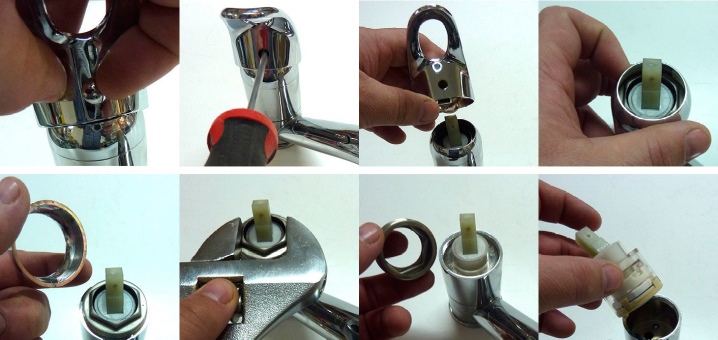
The crane, fixed to the tabletop, is dismantled from the inside.
The installation of a faucet with a nut begins with fixing it to the sink. There is a special recess at the end of the valve, into which a rubber gasket is installed to seal the mechanism. It should be included with the system.
Next, a cylindrical threaded rod is placed in the hole of the sink, while the seal should not move. Also, a similar rubber gasket is installed at the bottom.

Now you need to tighten the locking nut. It has a kind of "skirt" in the form of a washer, which seals the degree of clamping of the rubber ring. Then the nut is tightened with an adjustable wrench of the required size, while the tap must remain motionless on the sink. It is important that the spout hole is in the center, and the rotary (left and right) sectors are equal, the switch valves or the lever are located exactly relative to the sink. The diagonal position is selected if the crane is mounted on a corner of the table.
You can align the position of the mixer by first loosening the nut, performing the necessary actions, then retightening it.
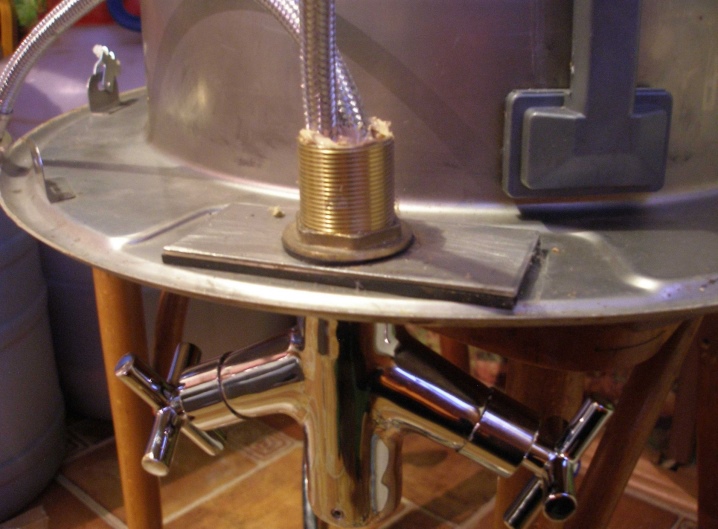
The next step is to install the underwater hoses. First, it is screwed in with a short fitting, you can additionally, but without effort, tighten it with a wrench.
If the sink was removed, you need to reconnect it to the drain pipe. For this, the siphon is installed in its original place, and the corrugated pipe is inserted into the sewer system.
After installation, it is recommended to turn on the water without aerator (handpiece), this will help to avoid quick contamination... Also, while the water is being drained, all connections are checked for leaks. Any leaks are repaired immediately.
The next step is to install a hose with a long fitting. And the last step is to install the sink.
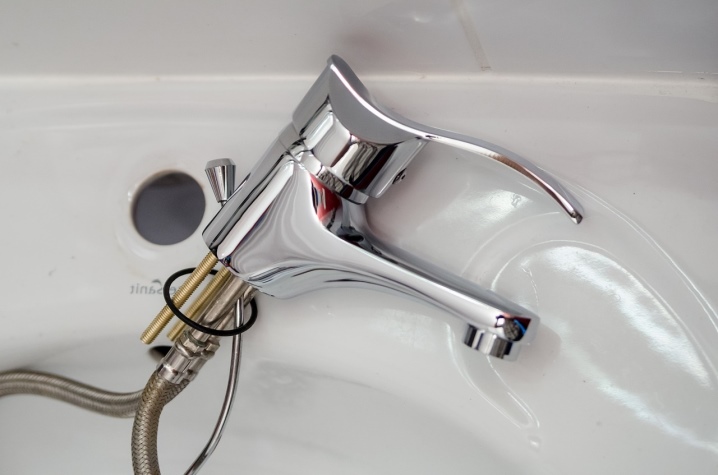
When starting the installation of a new mixer, it is recommended to wrap the pipe thread with FUM tape. It will prevent water leakage.
It is also possible to change separately one nut in the mixer. For this, the water is shut off and its remnants are drained. The union nuts are unscrewed, and the entire crane structure is removed. There is a hole for a hex key at the end of the system. It is better to break a nut that has burst immediately so that it does not interfere in the future. It is not recommended to unscrew the connections with a flat-type screwdriver or a triangular file (chisel), since the edges will simply be cut off. After everything has been removed, the nut changes, and the bushing is twisted into place. It is advisable to change the rubber gasket.
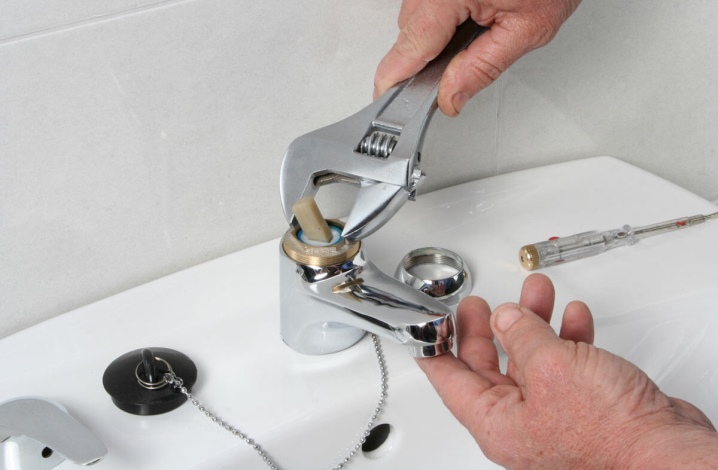
How to change the nut on the mixer, see below.













The comment was sent successfully.